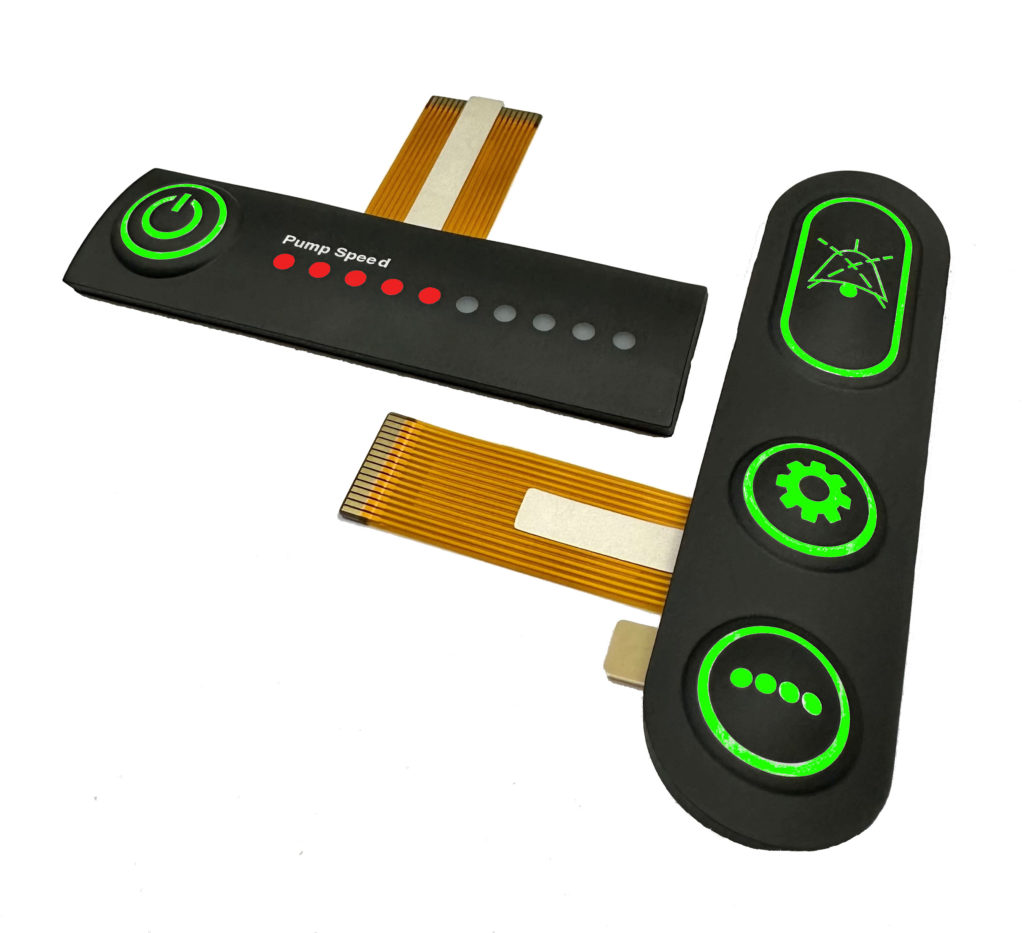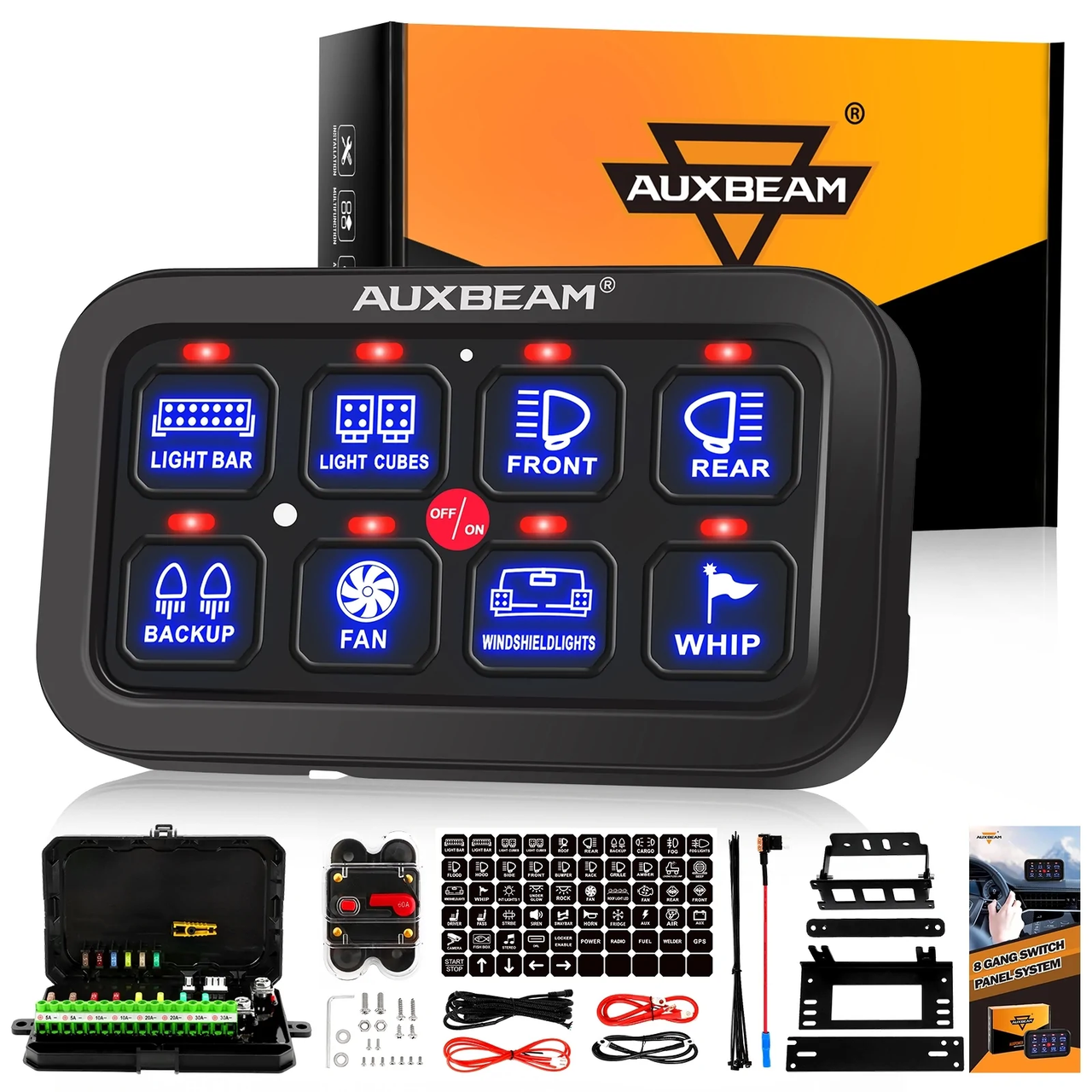How Switch Backlighting Improves Clarity in Dim Environments
Understanding the Benefits and Significance of Switch Backlighting in Interface
Switch backlighting works as an essential component in interface design. It improves visibility, especially in poorly lit atmospheres, and help in the navigation of tools for all individuals. This attribute not only promotes user confidence yet additionally advertises inclusivity for those with visual disabilities. As innovation progresses, the ramifications of switch backlighting continue to expand. Understanding its complex advantages may reveal much deeper understandings right into its function in modern device communication.
The Duty of Switch Backlighting in Customer User Interfaces
Switch backlighting offers a crucial function in interface, enhancing both usability and ease of access. It provides aesthetic comments to individuals, indicating the status and capability of numerous controls. This feature helps individuals rapidly identify non-active or active buttons, helping with reliable interaction. By brightening the controls, backlighting lowers the possibility of mistakes, as customers can easily recognize their options.
Additionally, Switch backlighting contributes to a natural design visual, often integrating effortlessly right into the total look of the interface. It allows developers to develop user-friendly experiences that lead customers via facility systems. Backlighting can be personalized, enabling producers to line up shades and strengths with brand identities, even more improving user interaction.
In environments where individual focus is separated, the clearness supplied by switch backlighting ends up being a lot more substantial. Overall, this feature plays a vital duty in making sure that interface are both functional and visually appealing.
Enhancing Presence in Low-Light Issues
How can user interfaces efficiently preserve performance in low-light problems? One crucial technique is via the implementation of switch backlighting. This function improves the exposure of controls and signs in dark atmospheres, making sure individuals can engage with tools without stressing their eyes or thinking the performance of various components. By illuminating buttons, backlighting provides a clear visual sign, boosting and decreasing mistakes user self-confidence when maneuvering with interfaces.

Additionally, the calculated use shade and intensity in backlighting can assist users in identifying between different functions and statuses, even more improving use. Reliable backlighting not just adds to a visually pleasing style yet additionally advertises safety and security, especially in situations where quick feedbacks are necessary. In conclusion, switch backlighting is a necessary component that greatly improves exposure and capability of interface in low-light problems, facilitating a seamless customer experience.
Improving Access for All Users
Improving access in interface involves boosting visual clearness to fit varied individual needs. Efficient backlighting not just benefits nighttime use however also plays a crucial function in making certain sufficient shade comparison for those with visual disabilities. By focusing on these factors, designers can produce a lot more comprehensive and user-friendly settings for all people.

Improved Visual Clarity
Quality in aesthetic style plays an important role in making certain that individual interfaces come to everyone, despite their capabilities. Switch backlighting substantially boosts aesthetic quality by providing clear visual cues that direct individuals in interacting with interface aspects. This function is specifically valuable for people with aesthetic disabilities, as it helps them differentiate between various controls and their states. Additionally, backlighting can minimize cognitive tons by making info less complicated to refine. Customers can swiftly determine active switches or buttons, helping with smoother navigation and interaction. By integrating switch backlighting, developers advertise inclusivity and usability, enabling all customers to involve with technology effectively. Ultimately, enhanced aesthetic clearness through backlighting cultivates a more straightforward experience throughout diverse customer groups.
Nighttime Functionality Advantages
Switch backlighting not just improves visual clarity but likewise supplies significant benefits for nighttime usability, making interfaces extra easily accessible for all customers. This feature is particularly valuable in low-light atmospheres, where conventional screens might be illegible. The lighting offered by backlit buttons enables users to connect with devices without straining their eyes or disrupting their surroundings. Additionally, it supports users with visual impairments by offering required cues in dark setups. Because of this, switch backlighting contributes to an extra inclusive experience, fitting differing levels of aesthetic ability and making sure that all users can navigate user interfaces effectively, no matter the time of day. Eventually, this functionality promotes a much more user-friendly environment for everybody.
Shade Comparison Considerations
Color comparison plays an essential function in improving accessibility within interface. High-contrast layouts ensure that individuals, consisting of those with aesthetic impairments and shade loss of sight, can conveniently distinguish between different components. This is especially crucial for switch backlighting, as reliable comparison assists users recognize non-active versus active states of switches. Applying suitable shade mixes-- such as light text on dark backgrounds or vice versa-- improves readability and individual experience. In addition, adherence to established contrast ratio guidelines, such as the Internet Content Ease Of Access Guidelines (WCAG), promotes inclusivity. By focusing on shade contrast, designers can produce interfaces that accommodate diverse customers, enabling more reliable and instinctive interaction with innovation. Ultimately, thoughtful shade choices boost use for all individuals, advertising a comprehensive electronic atmosphere.
Creating an Immersive Gaming Experience
In the domain of pc gaming, boosted visual hints can considerably elevate gamer interaction and communication with the environment. By using vibrant environment production through switch backlighting, programmers can craft immersive experiences that respond to in-game actions. This assimilation not just captivates gamers however likewise deepens their psychological connection to the game globe.
Boosted Visual Signs
Boosted aesthetic cues play a vital duty in developing an immersive pc gaming experience, enabling gamers to engage more deeply with the virtual setting. Switch backlighting can enhance these cues by lighting up controls, making them easily identifiable during gameplay. This function not just help in navigation yet additionally strengthens the thematic and psychological elements of the video game. As an example, various shades or strengths can symbolize various activities or states, giving instant comments to gamers. Such visual signs can boost situational recognition, helping gamers make quick decisions. In addition, backlighting can add to the total visual, integrating with the video game's design and story. In this means, improved visual cues raise player experience, cultivating a stronger connection to the game globe.
Dynamic Atmosphere Creation
Switch backlighting not just improves visual hints however additionally plays a substantial function in dynamic ambience development within gaming environments. By adjusting to in-game occasions, more tips here these lit up buttons can boost the overall immersion and emotional effect of gameplay. Throughout extreme fights, red backlighting may enhance stress, while calming blue colors can develop a sense of tranquility during exploration phases. This responsive lighting adds to a much more engaging individual experience, enabling players to feel more connected to their digital surroundings. Additionally, customizable backlighting options allow gamers to individualize their user interfaces, further enriching their gaming experience. By doing this, switch backlighting serves as an effective tool for programmers aiming to craft memorable and immersive pc gaming ambiences.
Improving Use for Everyday Gadgets
As innovation remains to permeate daily life, the importance of instinctive user interfaces ends up being significantly clear. Switch backlighting acts as a vital attribute that boosts functionality across numerous everyday tools, such as push-button controls, devices, and smart devices (Switch Backlighting). By brightening controls, backlighting helps individuals swiftly identify and operate functions, especially in low-light problems. This not only lowers irritation however additionally reduces mistakes, thereby enhancing overall user fulfillment
In addition, backlighting can offer visual feedback, suggesting whether a gadget is powered on or off. This feature is specifically helpful for customers with visual problems, as it makes controls a lot more accessible. In settings where quick response times are vital, such as workplaces or cooking areas, additional reading well-designed backlighting can substantially enhance communications. Inevitably, incorporating switch backlighting right into everyday devices fosters an extra easy to use experience, emphasizing the requirement for thoughtful style in technology that effortlessly integrates into day-to-day regimens.
Layout Considerations for Reliable Backlighting
Effective backlighting style needs cautious factor to consider of numerous aspects to guarantee optimal use. One important facet is the strength of the backlighting; it must be brilliant sufficient to improve presence without creating glow or eye strain. Shade temperature also plays a necessary duty; warmer tones can create a much more welcoming environment, while cooler tones might boost emphasis and performance.

Individual preferences and environmental aspects, such as ambient light levels, ought to likewise educate backlighting style. Modification options can improve the user experience, permitting individuals to change illumination or color settings to suit their demands. By attending to these components, designers can create reliable backlighting that substantially enhances interface use.
Future Trends in Switch Backlighting Technology
With innovations in innovation, the future of switch backlighting is poised for substantial advancement. Emerging trends suggest a change towards adjustable backlighting systems that permit customers to readjust color, brightness, and patterns according to personal preferences or situational demands. This adaptability enhances the individual experience by supplying a much more intuitive user interface.
Additionally, integration with smart home systems is expected, allowing switches to respond dynamically to environmental aspects such as ambient light or user activity. Energy-efficient LED innovation will certainly continue to control, offering longer life expectancies and decreased power intake.
Advancements in products science might additionally bring about innovative styles, such as flexible or clear backlighting choices that can be embedded right into different surface areas seamlessly. As interface end up being increasingly sophisticated, the demand for sophisticated switch backlighting remedies will certainly drive recurring r & d in the field, making sure that functionality and appearances evolve in tandem.
Frequently Asked Concerns
Exactly How Does Switch Backlighting Effect Battery Life in Instruments?
Switch backlighting can considerably impact battery life in gadgets. When activated, it eats additional power, potentially minimizing overall battery durability. Alternatively, effective backlighting technology might minimize this drainpipe, stabilizing presence and energy conservation successfully.
Exist Various Kinds Of Switch Backlighting Technologies?
Different switch backlighting innovations exist, including LED, OLED, and optical fiber. Each technology uses distinct advantages pertaining to illumination, energy efficiency, and layout versatility, dealing with various user choices and gadget needs.
Can Switch Backlighting Be Personalized by Users?
Switch backlighting can certainly be personalized by customers, enabling individualized lights impacts, shades, and illumination levels (Switch Backlighting). This versatility enhances individual experience, dealing with specific preferences and enhancing availability in numerous lights conditions
What Materials Are Typically Utilized for Switch Backlighting?
Typical products used for switch backlighting include LEDs for illumination, acrylic or polycarbonate for diffusing light, and various plastics for real estate. These materials assure toughness, effective light distribution, and enhance aesthetic allure in individual more tips here interfaces.
Just How Does Switch Backlighting Impact the Total Style Aesthetic?
Switch backlighting markedly affects general style visual by enhancing visual allure, creating climatic impacts, and guaranteeing performance in low-light problems. It enables developers to incorporate technology perfectly right into atmospheres, raising both design and user experience.
Switch backlighting serves as a vital element in user interface design. Switch backlighting offers a crucial feature in individual interfaces, boosting both use and ease of access. Switch backlighting considerably boosts visual clearness by giving clear visual signs that guide customers in interacting with interface components. Switch backlighting not just improves aesthetic clarity but additionally uses significant benefits for nighttime usability, making user interfaces more obtainable for all individuals. As a result, switch backlighting contributes to a more inclusive experience, fitting differing degrees of visual ability and guaranteeing that all users can browse user interfaces efficiently, no matter of the time of day.